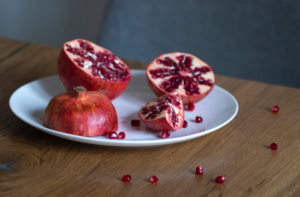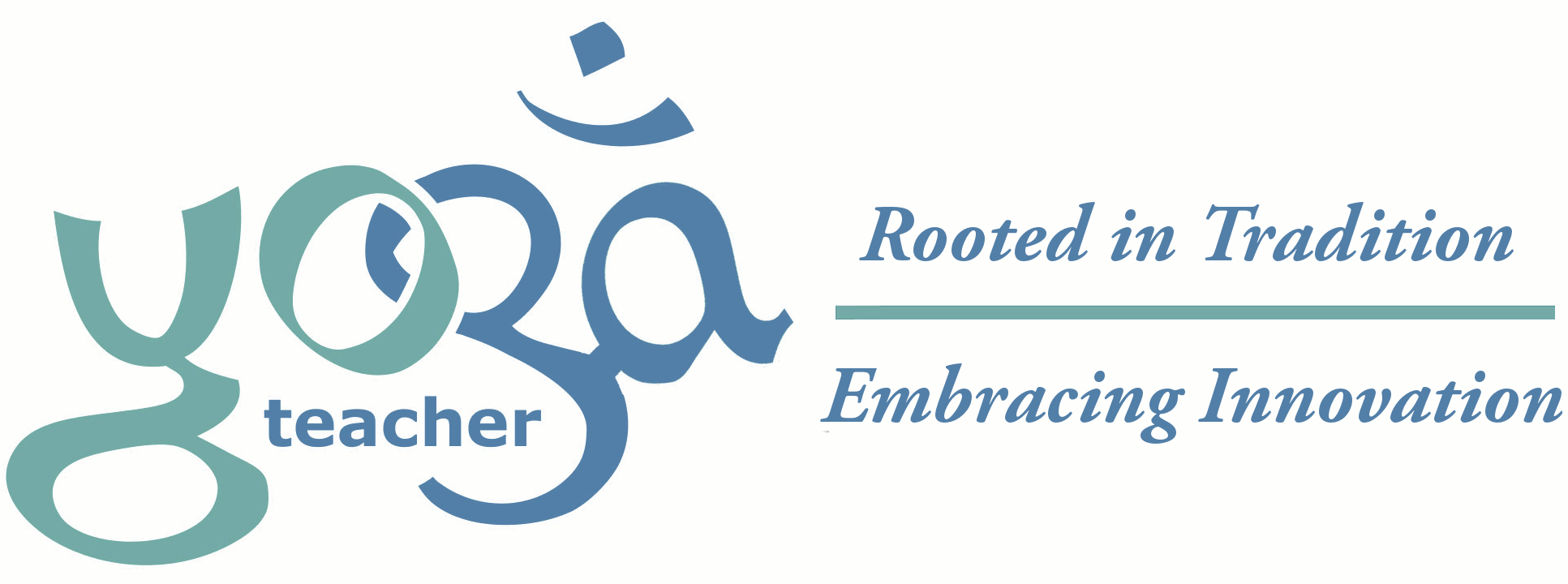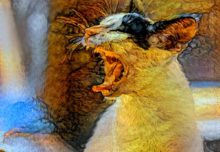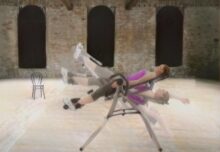
Most of us may never have dissected a human cadaver, but if you have sliced a piece of fruit, or carved a pumpkin, you are already familiar with the white stuff we sometimes call pith. This is the vegetable equivalent to fascia, and by observing its structure in a piece of fruit we can get a better understanding of the structure fascia in our own bodies.

The next time you eat a pomegranate, or slice into citrus, take a close look at and admire the beauty and functionality of its connective tissue. The white material inside the zest of citrus, the white lines that segment the fruit into wedges are part of the connective tissue. This tissue encapsulates, separates, and holds the wedges in place.
But if you look even closer, you will see that the fascia not only surrounds the wedge, but also penetrates it. Within each wedge are hundreds of individual little juice vesicles, each surrounded by and held in place by fascia.

Most of what we know about human anatomy was learned through the dissection of cadavers. The fascia and connective tissues that hold all the internal organs in place obscured the physicians view of the more interesting organs beneath. So the first step was to remove and discard the fascia. This institutional disregard for fascia persisted well into the late 20th century. The common perception of fascia was that it was an almost inert substrate that served to hold the body together, like cellophane or rubber bands, and could be understood in purely mechanical terms.
Fascia is part of a family of connective tissues that includes tendons, ligaments, cartilage, bones, adipose, blood and lymph. Although these tissues seem very different, they all originated from the same germ layer as the embryo developed. Moreover, they all are made of the same ingredients, but in different ratios. These include three different categories of fibers: Collagen, Elastin, and Reticular. It is these fibers in the blood that play a key role in clotting.
As in the image of the lemon slice above, where we can see the fascia penetrates, segments, and encapsulates the entire fruit, so too with the connective tissue of the human body. The fascia surrounds, penetrates and, segments each individual muscle and integrates it seamlessly into the greater whole of the human body. As you move from the belly of the muscle towards either the origin or insertion (the two ends), there are fewer and fewer muscle fibers and more and more fascia until we arbitrarily decide to call it a tendon. As the tendon approaches the bone, it does not so much attach to the bone as it envelopes, penetrates and becomes bone. So too with the ligaments and cartilage. They are all linked together as one contiguous network.
 Under magnification, these fibers attach to the exoskeleton of individual cells holding them in place. You could even imagine that the fascia penetrates the cell and in a sense, that the cytoskeleton within the cell is an extension of the fascial network. As it is the fibroblast cells that create and extrude those fibers into the ground substance to create fascia, perhaps it is more accurate to think that the cytoskeleton, fascia, and connective tissues are all extensions of the individual cytoskeleton. But either way, it is undeniable that mechanical force passing through the fascia is in turn transmitted through the interior of the cell.
Under magnification, these fibers attach to the exoskeleton of individual cells holding them in place. You could even imagine that the fascia penetrates the cell and in a sense, that the cytoskeleton within the cell is an extension of the fascial network. As it is the fibroblast cells that create and extrude those fibers into the ground substance to create fascia, perhaps it is more accurate to think that the cytoskeleton, fascia, and connective tissues are all extensions of the individual cytoskeleton. But either way, it is undeniable that mechanical force passing through the fascia is in turn transmitted through the interior of the cell.Recent findings show that mechanical force on the exoskeleton is passed through the cytoskeleton within the cell and can can affect gene expression, in effect switching on and off genes responsible for among other things, cellular reproduction, differentiation, and cellular ‘suicide’. This gives credence to the idea that your yoga practice is having effects that go far beyond being able to touch your toes.
Fascia is no longer viewed as inert. In fact the opposite is true. It is now known that fascia is highly innervated by the nervous system, secondary too or possibly even surpassing the retina of the eye. It is a network of dozens of different types of nerves that help us make sense of our selves and our place in the world. Fascia could also be argued to be part of the endocrine system.
When you take a fascially informed view of hatha yoga it can revolutionize your practice. For the purposes of your practice, it can be helpful to think of your fascia as a hammock, the trees that it attaches to are the bones of your body, and the person in the hammock is a muscle. If the muscle relaxes, it will sink into the fascial net and this can be used to stretch the fascia, as opposed to stretching just the muscle.
In this weeks yoga video I will be sharing a yoga practice designed to maximize the healthy functioning of the fascia and the movement of Prana through the fascia. This approach to asana practice increases benefits, while decreasing strain and possible injury in not only the muscles, but also the ligaments, tendons and cartilage.
Keep in mind that hydration of fascia is crucial to avoiding premature aging and injury and that yawning is one of the ways (in combination with stretching and yoga) to hydrate fascia. However, yawning is not addressed in this latest video because it has already been covered in my video Pranayama Part 7: Yawning.





